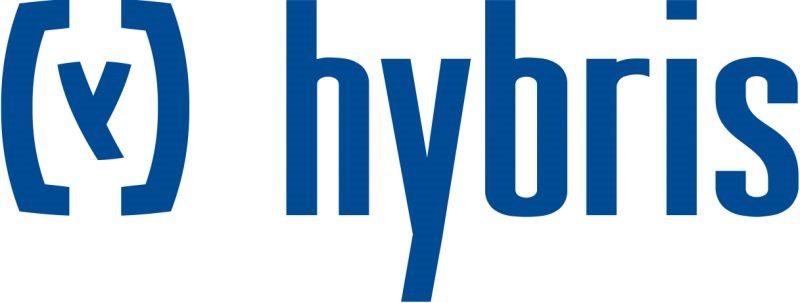hybris debuted version 5.1 of their platform in 2013, bringing us some great capabilities such as:
- Commerce Search with Hero Products, Bury and Boost rules for merchandising search.
- Improved B2C Commerce Accelerator with features such as Captcha, Site Map, Express Checkout and Basket Cross sell.
- Improved China Accelerator with updated designs and integrations.
- Order Management Cockpit and Services that provide back-office support for order processing, packing, shipping and package slip printing.
- InStore Cockpit that for providing physical stores full enterprise stock availability and enhanced product content.
- A new and improved Cockpit framework for extending and customising back-office administration interfaces.
Version 5.2
Since then we've now had version 5.2 which brings even more improvements. So what is it about this version of hybris that makes it a contender for your re-platforming or upgrade all the more worthwhile?
The latest release of the hybris Commerce Suite 5.2 has introduced a number of new features and improvements right across the whole application, meaning there's something in there for almost everyone. Here's a quick run down:
- B2B Commerce Accelerator feature enhancements; includes integration to procurement services.
- First release of the Data Hub integration service; an easier and more efficient way of integrating data.
- First release of the new Backoffice Admin interface; a more user-friendly interface to the hybris Management Console.
- Enhanced Capabilities of the Order Management Services; includes added support for "Buy Online Return In Store".
- Entitlement & Metering Management interface for managing models such on-going digital subscriptions or usage limits.
- B2C Commerce Accelerator technical enhancements; better reuse and componentisation of the page features to be easily reused on other pages.
- Enhancement of Subscription Management; those using the Telco accelerator can offer "self service" billing and subscription management to their customers.
- Workflow integration to Print and Adobe InDesign; allowing customers who create print artefacts to create workflow jobs that extend to Adobe InDesign and the creation of these assets.
- Enhancement to Omni Commerce Connect services; exposing further services such as "Guest Checkout" and "Return to Store" to be called via other entities within and outside hybris.
- Core platform, architectural and technology improvements; various bug fixes and enhancements to underlying libraries and technology.
Obviously there's a lot there, so here's a bit more depth on some of the things that have captured our attention.
The hybris B2B Commerce Accelerator
hybris has had a B2B component to it for quite some time. This enables sites to spin up either a primary or parallel point of sale and service, that meets the needs of corporate customers rather than just consumers.
Updates to the B2B Commerce Accelerator include a couple of key features that further enhance the ability for businesses to grow their B2B revenue while improving operational efficiencies:
- B2B PunchOut Service
PunchOut for the hybris Commerce Accelerator for B2B allows a buyer to shop from a supplier's online catalog and save the items selected for purchase as a requisition in the buyer's procurement system. The term "PunchOut" refers to how the buyer "punches out" from his or her procurement system into the supplier site. The shopping cart is used as a basis for creating a purchase requisition, which is sent for approval within the buyer's company. After the purchase is approved, the actual order is sent back to the supplier site for processing.
2. Secure Customer Portal.
The Secure Customer Portal AddOn provides early login, i.e., any request is redirected to a login page if the user is not authenticated. Users cannot browse the B2B site unless they are already registered with the site and have logged in (users currently cannot sign up for new account). Users can also begin the password recovery process.
The Hybris Data Hub
Unless your re-designing all of your enterprise architecture then you'll more than likely have a collection of different systems that you've amassed over the years. This makes integration more complex. New features like the Data Hub, make it easy to move data between systems, and so have the power to simplify and speed up ecommerce implementations.
The Data Hub enables end users to easily feed data from external systems into any hybris system, and greatly reduces the difficulty of getting a new hybris customer started. The complexity of the hybris data structure is hidden from the users that are designing the integration. Data can be input in a raw format with multiple rows per item in any order. No knowledge of dependencies between input items is required to input data. The Data Hub also acts as a staging area where external data can be analyzed for errors and corrected before being fed into hybris.
Key Features
- Quick and easy import of data from various external sources
- Support for batches, near real-time messaging interface, and real-time web services for data import/export
- Simple composition of fragmented data
- Data sequencing and dependencies
- Cardinality reductions, m:n mappings
- Data Hub Adapter as an interface between the hybris Commerce Suite and the Data Hub
- Support for batch and message driven integration
- Spring Integration Framework for message handling
- Highly scalable, flexible, and service-oriented architecture
- Fully extensible and customizable by hybris partners
- Flexible deployment options to manage scale and performance (co-deployment, isolated deployment, load-balanced deployment)
The hybris Backoffice Admin Area
The hybris Backoffice Admin Area is a user-centric backend interface that enables business users to easily manage any kind of data within a hybris system. Built on top of their Next Generation Cockpit Framework and leveraging its capabilities, it is the foundation for hybris, their partners and their customers to build custom business tools in a simple and visually appealing way. It provides specific widgets needed to create administrative and management tools, such as search, list views, or navigation trees. This allows businesses to design tailor-made business tools to suit their specific needs in less time, all with the power of the hybris Commerce Suite behind it.
Key Features
- hybris system and product data management in an easy and convenient way (CRUD)
- Default combination of widgets provides functionality similar to the hybris Management Console
- Ability to reuse all available components for custom projects built on Next Generation Cockpit Framework
- Ability to localize system data, product data, and user interface
- User roles selector based on assigned authority groups
- Ready-to-use support for mobile devices like tablets, smartphones through responsive interface
- Support for classification attributes
- Configurable type-ahead filter search for the navigation tree
- Media editor with magnifier functionality
Overall the Hybris platform keeps getting better and better, and while no system does everything out the box, the continuous improvement and new development coming out of Hybris' roadmap, continues to show why it stands out so much in the Gartner and Forrester benchmarks.
If you're thinking about Hybris as a choice for your new ecommerce platform, then get in touch for more info or to book a demo.

